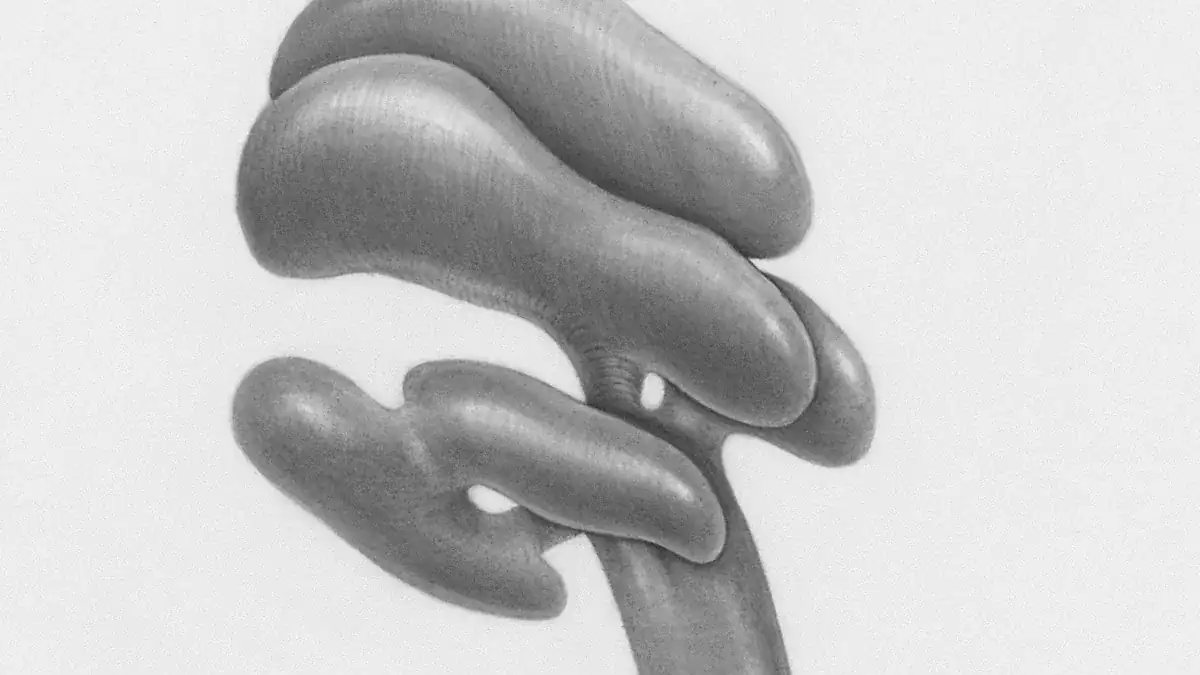
Many men wonder about their prostate size and what constitutes a normal prostate size. The prostate is a small gland. It plays a key role in male reproductive health. This prostate gland naturally changes with age. Prostate enlargement becomes common.
This blog provides clear information on normal prostate sizes, age-related changes, and what an enlarged prostate (BPH) means, using a prostate gland size chart. Prostate enlargement affects many men. Its prevalence increases significantly with age, as shown:

Key Takeaways
- The prostate gland changes as men get older. Its size can grow from a walnut to a lemon or tennis ball.
- An enlarged prostate is called BPH. It is common in older men. BPH is not cancer.
- BPH can cause problems with urination. These include needing to pee often or having a weak stream.
- Doctors use tests like a DRE or ultrasound to check prostate health. They also measure prostate size.
Normal Prostate Size by Age: A Prostate Gland Size Chart
The prostate gland changes throughout a man’s life. Understanding these changes helps men monitor their health. A prostate gland size chart provides a clear reference for what to expect at different ages. The prostate grows and develops from puberty into adulthood. It then often continues to grow later in life.
Prostate Volume in Young Adults (20-40)
For young men, the prostate reaches its full adult size. This typically happens in their 20s. The average adult prostate is about the size of a walnut. It usually weighs between 15 to 20 grams. Its volume is around 20 to 25 cubic centimeters. This volume generally stays stable for men under 40 years old.
A normal range for the prostate is 20 to 30 cc. However, the normal size of a prostate can vary from 15 to 40 cc. Individual factors cause these variations. Between the ages of 30 and 45, the prostate mass remains stable at approximately 20 grams. A healthy adult prostate also has specific dimensions.
| Dimension | Measurement (cm) |
|---|---|
| Width | 4 |
| Height | 3 |
| Thickness (Depth) | 2 |
These measurements represent a standard size of a prostate in young adulthood.
Mid-Life Prostate Dimensions (40-60)
Men often begin to notice changes in their prostate during mid-life. The prostate starts to grow again for many men after age 40. This growth is usually slow at first. It may not cause any symptoms.
This period marks the beginning of potential prostate enlargement. A prostate size chart would show a gradual increase in volume for many men in this age group. The prostate may grow slightly larger than a walnut.
Prostate Size in Older Men (60+)
Prostate growth often becomes more noticeable as men get older. This is a common part of aging. By age 60, the prostate can expand significantly. It may reach the size of a lemon or even a tennis ball. This continued growth is why doctors monitor prostate health closely in older men. The typical prostate size by age continues to increase. After age 80, prostate enlargement often continues. Benign Prostatic Hyperplasia (BPH) is present in up to 90 percent of men in this age group. The average weight of the prostate also increases with age.
| Age Group | Average Prostate Weight (gm) |
|---|---|
| Age 40 | 20 |
| Older than 80 | 38.8 |
This prostate gland size chart data shows the significant changes in prostate weight over time.
Enlarged Prostate (BPH): What the Prostate Size Chart Shows

Men often experience changes in their prostate as they age. One common condition is an enlarged prostate.
Doctors call this benign prostatic hyperplasia, or BPH. Understanding BPH helps men recognize when to seek medical advice. A prostate gland size chart can help illustrate these changes.
Defining Benign Prostatic Hyperplasia
Benign prostatic hyperplasia (BPH) describes an increase in the prostate gland’s size. This condition is the most common prostate issue among males. It typically affects nearly all men as they age.
BPH can cause symptoms like difficulty with urination and a sudden urge to urinate. The term “benign prostatic hypertrophy” is sometimes used, but “hyperplasia” more accurately describes the cell growth.
Histologically, BPH involves a growth process. This process affects both the stromal and epithelial parts of the prostate gland. This growth starts specifically in the periurethral and transition zones of the prostate. These zones surround the urethra.
| Tissue Elements | Range (%) |
|---|---|
| Connective tissue | 16.1–56.1 |
| Smooth muscle | 20.2–59.3 |
| Epithelium | 4.3–24.8 |
| Lumen | 5.3–21.9 |
Studies show that men with symptomatic BPH have a higher stromal-to-epithelial ratio. This suggests its important role in the condition’s development.
When Prostate Enlargement Becomes Significant
A prostate size chart helps doctors classify the degree of prostate enlargement. The normal range for prostate size can vary from 15 to 40 cc. This depends on age and individual factors. However, doctors consider a prostate enlarged when its volume exceeds certain thresholds.
| Age Range | Typical Prostate Size | Classification |
|---|---|---|
| 20-40 | 20-30 cc | Normal |
| 40-60 | 30-50 cc | Mildly Enlarged |
| 60+ | 50-80 cc | Moderately Enlarged |
| 70+ | 80+ cc | Severely Enlarged |
For men aged 40-60, a prostate volume of 30-50 cc indicates a mildly enlarged prostate. For men over 60, a volume of 50-80 cc suggests a moderately enlarged prostate.
Doctors also categorize prostate gland volume ranges as less than 40 mL, 40–60 mL, and greater than 60 mL. These classifications help determine the best course of action. Significant prostate enlargement often leads to noticeable symptoms.
BPH vs. Prostate Cancer: Key Differences
Men often worry about prostate cancer when they hear about an enlarged prostate. However, BPH is not cancer. It does not increase the risk of prostate cancer. Understanding the differences between BPH and prostate cancer is crucial.
- BPH: This involves the abnormal growth of non-cancerous cells. This leads to prostate enlargement. The term ‘benign’ means it is not cancerous. ‘Hyperplasia’ describes the abnormal cell growth.
- Prostate Cancer: This involves the uncontrolled growth of cancer cells within the prostate tissue. It is generally a slow-growing cancer. It can remain without symptoms for months or years.
Here are other key differences:
| Feature | Benign Prostatic Hyperplasia (BPH) | Prostate Cancer (PCa) |
|---|---|---|
| Location | Primarily affects the transition zone (TZ) of the prostate. This zone surrounds the urethra. | Most commonly starts in the peripheral zone (PZ) (70-80% of cases). This is the outer part of the prostate. Less often, it can arise in the TZ (10-20%) or the central zone (CZ) (5-10%). |
| Aggressiveness | Not cancerous; it does not spread to other parts of the body. | It can be aggressive and spread to other body parts if doctors do not treat it. Tumors in the TZ and CZ are often more aggressive. Doctors tend to diagnose them at a later stage due to their location. This can make early detection harder. |
| Growth Pattern | It increases the number of benign prostate cells. This causes the gland to enlarge. It can potentially press on the urethra. | It involves the uncontrolled growth of malignant cells. These cells form tumors. They can invade nearby tissues and spread. |
Doctors use different tests to diagnose BPH and prostate cancer. They also have different treatment approaches for each condition.
BPH Symptoms and Prostate Volume Measurements
An enlarged prostate can cause various urinary issues. These issues often prompt men to seek medical help. Understanding these signs helps men know when to consult a doctor. Prostate volume measurements also play a key role in diagnosis.
Common Urinary Symptoms of BPH
Men with BPH often experience several urinary symptoms. These symptoms result from the enlarged prostate pressing on the urethra. This pressure obstructs urine flow. Here are common signs and symptoms of an enlarged prostate:
- Difficulty Initiating Urination: A weak or hesitant urine stream often occurs. The prostate obstructs the urethra.
- Incomplete Emptying of the Bladder: Men feel their bladder is not fully empty after urinating. This leads to more frequent bathroom visits.
- Urgency to Urinate: A sudden, compelling need to urinate can cause anxiety. It also disrupts daily activities.
- Straining During Urination: Men need increased effort to push urine out. This happens due to obstruction from an enlarged prostate.
- Frequent Urination: An increased need to urinate, especially at night, is common. Pressure on the urethra from the enlarged prostate causes this.
Studies show a positive correlation between prostate volume and the International Prostate Symptom Score (IPSS). This means as prostate volume increases, BPH symptoms tend to worsen.
A negative correlation exists between prostate volume and maximum urine flow rate (Qmax). Larger prostate volumes are associated with reduced urine flow rates.
Diagnostic Tests for Prostate Health
Doctors use several diagnostic tests to assess prostate health. These diagnostic tests help confirm BPH and rule out other conditions.
- Questionnaire: This assesses the severity and type of enlarged prostate symptoms.
- Digital Rectal Examination (DRE): A doctor physically feels the prostate for enlargement or abnormalities.
- Prostate-specific antigen (PSA) blood test: This checks for elevated PSA levels. High PSA can indicate BPH, prostate cancer, or prostatitis.
- Urine flow study: This measures the amount and rate of urine flow.
- Transrectal ultrasound: This uses sound waves to image the prostate gland. It helps determine its size.
- Biopsy: Doctors take a tissue sample for microscopic examination if cancer is suspected. This often uses ultrasound guidance.
PSA levels are important. A PSA level under 4.0 ng/mL is generally normal. The ‘gray zone’ of 4.1–10 ng/mL can indicate either BPH or prostate cancer. Doctors use PSA density and PSA velocity for more precise diagnosis.
| Parameter | BPH | Prostate Cancer |
|---|---|---|
| Typical PSA range | 4–10 ng/mL | 4–20+ ng/mL |
| Rate of PSA change | Slow (stable over years) | Fast (significant within months) |
| PSA density | Usually <0.15 | Often >0.15 |
When to Consult a Doctor for BPH
Men should consult a doctor when BPH symptoms significantly affect their quality of life. Persistent symptoms like frequent urination, urgency, or a weak stream warrant evaluation.
An enlarged prostate over 80–100 grams (80–100 cc) can significantly block the urethra. This leads to serious BPH complications. These complications include urinary retention, recurrent UTIs, and kidney damage.
Treatment for an enlarged prostate may be recommended when the gland measures over 30 cc. This is especially true if it causes moderate to severe lower urinary tract symptoms (LUTS). Once the prostate exceeds 80 cc, the risk for complications is much higher. Early diagnosis and treatment are essential.
Options for BPH
Men have several options for the treatment for enlarged prostate. The best approach depends on the severity of symptoms and the size of the prostate. Doctors aim to improve urinary function and enhance quality of life.
Lifestyle Changes and Watchful Waiting
For men with mild symptoms of an enlarged prostate, doctors often recommend lifestyle changes and watchful waiting. This approach monitors the condition without immediate medical intervention.
- Incorporate Helpful Exercises: Men can practice Kegel exercises. These strengthen pelvic floor muscles. They help manage urinary urgency and incontinence. Perform sets of 10 Kegels three times daily.
- Adjust Dietary Choices: Eat a diet rich in fruits, vegetables, nuts, seeds, legumes, and lean proteins. Avoid processed carbs, red meats, saturated fats, and high dairy intake.
- Avoid Diuretics: Stay away from alcohol, coffee, certain teas, and sodas. These can increase urinary frequency.
- Manage Stress: Stress can worsen BPH symptoms. It causes bladder and prostate muscles to contract. Manage stress through meditation, breathing exercises, and regular exercise.
- Practice Healthy Urinary Habits: Urinate when you feel the urge, ideally every 2-3 hours. Avoid drinking liquids before bed. Refrain from straining during urination.
For men with mild BPH symptoms (IPSS < 8), the risk of their condition progressing to moderate or severe symptoms (IPPS ≥ 8) was 31% over four years. Factors increasing the risk of needing BPH treatment include older age, larger prostate size, and higher symptom scores.
A study showed 81.2% of patients with mild BPH symptoms remained stable after an average of 17 months of watchful waiting.
Prostate size naturally changes with age. An enlarged prostate, known as BPH, is common but manageable. The prostate gland size chart helps men understand normal ranges for their prostate. It also shows the significance of prostate enlargement.
Men should know their prostate symptoms. Regular check-ups and talking with doctors are important for personalized advice about the prostate. Proactive prostate health management helps men maintain well-being. This ensures a healthy prostate throughout life.



